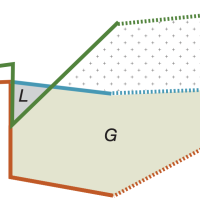The Resilience+ Innovation Facility uses the Cumalative Avoided Losses (CAL) method to measure resilience. The method quantifies total compromise of current and future economic well-being as the result of a shock, in comparison to a counterfactual situation in which a shock does not occur. The method can be applied to any quantifiable economic well-being measure, such as income, consumption, asset value, caloric intake, and food security indices.
The CAL method can be used not only to track a population’s resilience over time, but also to quantify the impacts of interventions on resilience, and to compare the cost-effectiveness of building resilience prior to shocks to providing post-shock humanitarian aid.
Publications

Paper: On the Definition and Estimation of Economic Resilience Using Counterfactuals
A resilience metric that can be estimated with panel data can be used to not only evaluate the impact of different policies on resilience but also to judge the public finance efficacy.

Brief: Measuring Economic Resilience with the Cumulative Avoided Losses (CAL) Metric
The CAL Metric compares actual economic experience and a no-shock counterfactual to calculate economic resilience.
This page is under development
